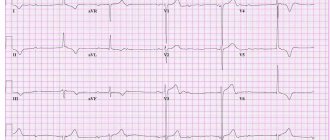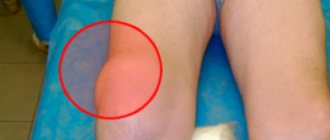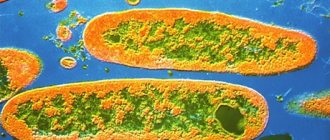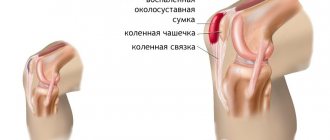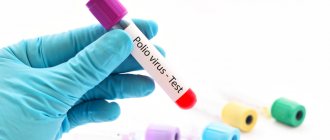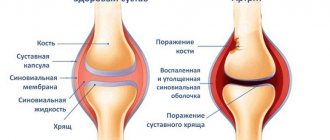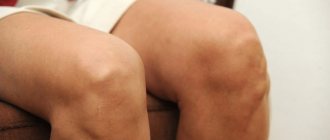From this article you will learn about the types of polyarthritis, what kind of disease it is, what causes it. Symptoms and treatment, signs, diagnosis of pathology.
Author of the article: Nivelichuk Taras, head of the department of anesthesiology and intensive care, work experience 8 years. Higher education in the specialty “General Medicine”.
Article publication date: 06/25/2019
Article updated date: 01/17/2020
Polyarthritis is simultaneous inflammation of at least 5 joints. There are different types of polyarthritis (rheumatoid, psoriatic, gouty), their common symptom is pain in different joints.
Types of polyarthritis using the example of hand joints. Click on photo to enlarge
The changes that occur in the body during polyarthritis, their danger and the prognosis for recovery depend on the type of pathology (the cause of inflammation of many joints), as well as on the degree of its severity.
- Some types of polyarthritis (for example, if the cause of the disease is the body’s reaction to a viral infection) can be cured completely, or even such pathology goes away completely on its own.
- Others, such as gouty arthritis, can be successfully treated into stable remission.
- Rheumatoid and psoriatic polyarthritis are incurable and require lifelong therapy.
Depending on the type of pathology, rheumatologists and traumatologists can treat it.
general description
Polyarthritis can be caused by a variety of reasons, ranging from infectious diseases (gonorrhea, dysentery, etc.), metabolic disorders and allergies, to exposure caused by local trauma.
So, what happens in this joint disease? A well-known fact is that both the tissues and membranes surrounding the joint have a huge number of blood vessels and nerve endings. Due to this, the possibility of their immediate response in an inflammatory form to an external or internal influence is determined. When an infection enters a joint with blood, infectious polyarthritis develops, which occurs in combination with purulent inflammation that affects the entire joint. In the same case, if waste products of various types of microorganisms enter the joint along with blood, the disease is characterized by a lesser severity of its own manifestations, and this also determines the possibility of its cure.
There are several main forms of polyarthritis, which, together with their inherent symptoms, we will consider below.
Proper nutrition
To quickly cure polyarthritis, you must follow the rules of nutrition. Then the body will receive all the necessary vitamins and components, and will be able to carry out recovery processes faster. Add the following foods to your diet:
- Red peppers, carrots, pumpkin, tomatoes and beans;
- Eat more dairy products to replenish your body with calcium;
- Eat lean fish, flaxseeds, eggs and fish oil;
- Eat cranberries, lingonberries and currants to boost your immunity;
- Eat 2 apples daily;
- Season all dishes with cloves, turmeric or ginger. Skip the salt and pepper;
- Drink one and a half liters of water daily to improve metabolism;
- You can drink compotes from natural fruits, make fruit drinks or hibiscus;
- Doctors prescribe teas from viburnum, St. John's wort and black currant to patients. Such drinks boost immunity and strengthen the entire body.
If you correctly create a menu for the week, then the body will receive all the useful components for a quick recovery. In order not to harm your health, avoid these products during treatment of polyarthritis:
- Flour products;
- Smoked products;
- Spicy and pickled food;
- Sugar and sweets;
- Exotic types of fruits;
- Coffee, soda and alcohol;
- Salt.
If you eat such food, it can provoke symptoms of polyarthritis and worsen the patient's condition. For example, salt will retain water in the body. This will increase swelling in the joints.
To completely cure polyarthritis, it is necessary to take a comprehensive approach to therapy. Only one type of treatment will not produce results. It is necessary to attend procedures, lead a healthy lifestyle, do therapeutic exercises and eat right.
Previous DiseasesRheumatoid arthritis - stages, causes, symptoms, treatment, prevention Next
DiseasesHow to cure arthrosis - surgical and drug treatment, manual therapy, folk remedies
Infectious specific polyarthritis: symptoms
This form of polyarthritis occurs due to infectious diseases such as gonorrhea, tuberculosis, dysentery, brucellosis and, less commonly, under the influence of other types of infections on the body. As a rule, changes in the joints form during a pronounced period of manifestation of the underlying disease. Inflammation is concentrated in the area of a single joint or affects several joints.
Brucellosis polyarthritis
In this form, joint disease most often manifests itself in a chronic form, and many systems and organs in the body are affected. The disease affects people who have had contact with an animal infected with brucellosis or people who have eaten food contaminated with the causative agent of brucellosis. Such products include cheese, raw milk, cottage cheese, etc.
Brucellosis polyarthritis of joints: symptoms
Mostly large joints are affected. Characteristic manifestations are acute pain that occurs in the joints, as well as their swelling in combination with limited mobility in them. This polyarthritis is also characterized by the appearance of undulating fever and enlargement of the spleen, lymph nodes and liver. In addition, neuralgia and neuritis often occur. The inflammatory process is also concentrated in the area of the lumbar vertebral region, including in the area of the sacroiliac joints. Accurate diagnosis is ensured by using the Wright and Heddleson reaction, as well as the Burnet test and several other effective options that provide differential diagnosis of this type of polyarthritis from nonspecific infectious polyarthritis, rheumatic and others.
Gonorrheal polyarthritis
The development of the gonorrheal form of the disease occurs, as a rule, during the first month of gonorrhea. Meanwhile, with prostatitis or chronic gonorrheal urethritis, the timing may be slightly increased.
Gonorrheal polyarthritis of joints: symptoms
The development of the inflammatory process in the joints is characterized by a sudden onset in combination with extremely pronounced pain. Mostly the large joint is affected. When the process is purulent, its completion is marked by complete articular ankylosis (that is, complete immobility of the joint). A characteristic manifestation of the disease is also high fever, weakness, weight loss, and an increase in ESR in the blood (erythrocyte sedimentation rate). To differentiate this form of the disease, it is enough to diagnose gonorrhea; in parallel, the Berde-Giangou reaction is used - in this case it is positive.
Dysenteric polyarthritis
The development of this form of polyarthritis occurs in patients with dysentery, usually during the recovery stage, in rare cases - 1-2 months after the end of the disease.
Dysenteric polyarthritis of joints: symptoms
Inflammation occurs in one or several joints, and at the same time a high temperature appears. A blood test determines the moderation of leukocytosis, as well as acceleration in ESR. As a rule, the course of this form of the disease is characterized by its own benign quality, and due to adequate therapy it is possible to completely get rid of articular manifestations. Differentiation of the disease is required from its infectious or rheumatic form. The presence of dysentery in the patient's history helps to determine, accordingly, dysenteric polyarthritis, which is also accompanied by the determination of the lack of effectiveness in the antirheumatic treatment used.
Syphilitic polyarthritis
In this case, joint disease occurs when the tertiary form of syphilis (that is, its late form) is relevant.
Syphilitic polyarthritis of the joints: symptoms
The development of the inflammatory process occurs in acute or subacute form, characteristic pain occurs, especially intensifying at night. In general, the patient’s condition is little subject to any changes. There is no pain in the specific form of its manifestations when trying to determine it during palpation. Most often, the large joint (shoulder, knee, elbow or ankle) is affected. With the development of the gummous process in the joint, its rapid deformation is formed, but its functionality is little affected, which is unusual for other forms of manifestation of polyarthritis. This form of polyarthritis can be differentiated by a history of syphilis, which, in turn, is determined by a positive Wasserman reaction and other specific techniques.
Physiotherapeutic activities
Treatment of polyarthritis is a complex and long process. Drug therapy only maintains the patient’s stable condition and relieves the external manifestations of the disease. Physiotherapeutic measures, which are prescribed during the period of remission, help stop the development of the disease and restore joint mobility. The attending rheumatologist, based on the general picture and prognosis of the disease, prescribes one or more types of therapy.
It could be:
- Manual therapy;
- Ultrasonic exposure;
- Magnetotherapy;
- Treatment with low temperatures;
- Electrophoresis.
Exercise therapy is mandatory and regular spa treatment is recommended. Relapses are prevented by mud wraps, salt compresses, stimulating baths, general massage, hydrotherapy and other procedures aimed at restoring joints.
Infectious nonspecific polyarthritis
This type of polyarthritis is characterized by the presence of a number of characteristic signs. For example, it is often defined as rheumatoid polyarthritis, the symptoms of which are similar to rheumatism in its own manifestations. It is also defined as deforming polyarthritis - symptoms also manifest themselves in changes in the shape of the joints. The only constant part of any definition of the disease, as you can see, remains polyarthritis, which, as we have already highlighted, is multiple inflammation of the joints, but initially it can also occur in the form of arthritis, that is, a single inflammation.
Infectious nonspecific polyarthritis, when examined in more detail, has an infectious-allergic genesis (origin) with a characteristic progressive systemic lesion in the connective tissue. As a rule, the connective tissues of the musculoskeletal system are affected, which is accompanied by the development of deep trophic disorders (processes that provide cellular nutrition and are responsible for the preservation of the functions and structure of organs and tissues) of many systems and organs.
Susceptibility to the appearance of infectious nonspecific polyarthritis is observed at different ages. Thus, in childhood, the disease manifests itself in the form of Steele’s disease; it occurs both in the most productive age (from 20 to 40) and in the elderly. It is noteworthy that the incidence among women is three times higher than among men.
There is currently incomplete clarity regarding the causes and conditions contributing to the appearance and development of rheumatoid polyarthritis. Basically, researchers adhere to its connection with the presence of a low-virulent chronic focal infection in the body (mostly we are talking about staphylococcal or streptococcal infections). The fact is that the development of the disease in question is often noted after the patient has suffered from influenza, tonsillitis, as well as when chronic diseases of the paranasal sinuses, ears, genitourinary system organs, gall bladder, etc. are relevant.
As for clinical manifestations, their polymorphism is noted, and this, in turn, determines significant difficulties for early diagnosis and differentiation of the disease. Initially, as we have already noted, the disease may be preceded by various types of unfavorable factors such as sore throat, flu, joint injuries, central nervous system overstrain and others. Directly infectious nonspecific polyarthritis can manifest itself in an acute form in combination with an increase in temperature, as well as sharp pain that occurs in one or several joints at the same time. There is often redness of the skin concentrated in the area of the affected joint, as well as swelling.
The subacute onset of the process can also be characterized by fever (low-grade), as well as minor changes in the joints (proliferative or exudative scale), a mild increase in temperature at the local level, and moderate pain in the joints.
Most often, the onset of the disease occurs in a subacute form. Basically, its onset is accompanied by multiple symmetrical lesions of the feet and small joints. Elderly patients are faced primarily with damage to large joints (hip, knee). The course of the disease is chronic and progressive; more and more joints are gradually involved in the process.
As for the severity of the disease, in most of its manifestations it determines the frequency and nature of exacerbations. Thus, some patients experience rare and short-term manifestations of the disease, while others experience pain almost constantly, with its rare weakening. Like the causes of the disease, along with the peculiarities of its course, exacerbations are extremely diverse in the causes of their manifestations. In particular, these include infectious diseases and non-infectious diseases, mental trauma, etc. Some patients experience relapses without any reason provoking them.
The minimal activity of the process characteristic of the disease does not lead to disruption of the general condition of the patients, the pain in the joints is not sharp, and it manifests itself to a greater extent during movement. The initial stages of the process are characterized by the absence of external changes in the joints, while the later stages, in some cases, may be accompanied by irreversible and persistent deformations in the joints.
The average activity of the process is characterized by a disturbance in the general condition of patients with the appearance of weakness and increased fatigue. In the morning, painful stiffness is noted for the patient; pain in the joints is relevant not only during movement, but also when at rest. There is also swelling in the area of the affected joints, local temperature in their area is increased, and the general body temperature is predominantly subfebrile.
As for the pronounced activity inherent in the process, there is a sharp deterioration in the patient’s condition. Sleep and appetite also worsen, patients lose weight, and they develop extremely pronounced neurotic reactions. Long-term stiffness is also characteristic, due to which movements are limited. The pain in the joints is acute, which is also true for the resting state.
It should be noted that most often the rheumatoid form of the disease is polyarthritis of the fingers, the symptoms of which manifest themselves in their inflammation. In any case, therapy is necessary to maintain joint mobility and prevent damage.
In addition to the listed features, the disease is also characterized by the fact that various systems and organs are involved in the pathological process. Thus, about 50% of patients experience disorders of the cardiovascular system, and in some cases heart defects occur. The advanced nature of the disease can lead to changes in the kidneys, which is expressed in focal nephritis, while a severe progressive course of the process often leads to the development of amyloidosis. Functional disorders in the liver are also often observed.
Prognosis for recovery
The prognosis depends on the type of pathology. Let's look at examples:
- Rheumatoid arthritis. The prognosis is conditionally unfavorable. The disease is treatable, and with adequate treatment, remission can be achieved for the next 5–10 years. After 10–12 years, 80% of patients experience persistent joint deformation and loss of ability to work.
- Systemic lupus erythematosus. The prognosis is conditionally unfavorable. With adequate therapy, stable remission can be achieved, in which the symptoms of the disease will not bother you for 3–10 years.
- Fibromyalgia. The disease progresses with age and the prognosis is unfavorable.
- Ankylosing spondylitis. The prognosis is conditionally unfavorable. Treatment of polyarthritis of the joints only slows down the progression of the disease. Over time, complete loss of ability to work is possible.
- Psoriatic polyarthritis. The prognosis is conditionally unfavorable. Over time, the disease progresses. With properly selected therapy, it is possible to slow down the development of the pathological process and achieve stable remission for 3–5 years.
- Viral polyarthritis. The prognosis is favorable with timely treatment, unfavorable with the development of complications and damage to internal organs (heart, kidneys).
- Gouty arthritis. The prognosis is conditionally unfavorable. With diet and drug therapy, remission can be extended to 5 years or more.
Crystalline (exchange) polyarthritis: symptoms
This type of disease is formed in the body due to disturbances in metabolic processes. This, in turn, leads to the deposition of crystals of various salts in the joints. For example, if a person has gout, the process of removing uric acid from the body is disrupted, which leads to the deposition of its crystals in the joints. Given their needle-like shape, serious irritation of joint tissues is common, which leads to the formation of a pronounced inflammatory process. Otherwise, a disease with such manifestations is defined as a gout attack. Some patients experience such an attack only once in their lives, others constantly, which provokes gradual deformation of the joints.
Diagnostics
Since the disease has several types, timely, accurate diagnosis is of great importance. It is carried out on the basis of patient complaints, visual examination, and analysis of functional abilities. Instrumental studies include x-rays and ultrasound.
Additionally carried out:
- clinical and biochemical analysis of blood and urine;
- puncture of the joint, collection of fluid from it;
- densitometry – measurement of bone density, detection of fractures;
- arthroscopy;
- tissue biopsy;
- scintigraphy;
- ECG.
If infectious specific polyarthritis is suspected, studies such as the Wasserman reaction, PCR blood test, enzyme immunoassays, and bacterioscopy are carried out.
During the examination, it is important to discover the cause of the disease and determine its type. Based on the findings, appropriate treatment is prescribed.
Psoriatic polyarthritis: symptoms
This form of the disease, like any other form of polyarthritis, causes inflammation, as well as swelling of the joints and pain in them with a concomitant disease, which, as the name suggests, is psoriasis. It is noteworthy that psoriatic polyarthritis affects, in addition to joints, other parts of the body - for example, tendons and ligaments. Some situations in which the joint has suffered significant damage may require surgery.
The reasons that provoke the development of this form of polyarthritis are unknown. The onset of the process involves the synovium of the damaged joints (that is, the tissue surrounding the joint) and in some cases another part of the body (tendon, ligament). Psoriatic polyarthritis is not a hereditary disease, which, however, does not exclude a greater susceptibility to it for those individuals whose relatives were diagnosed with it.
Psoriatic polyarthritis can affect any joint, but in general it is common to identify several main scenarios in which this disease develops.
- Oligoarticular asymmetric arthritis. This type of disease is the most common and, at the same time, less serious in its manifestations. Psoriatic polyarthritis in this case affects less than five joints. Most often, only one large joint (for example, the knee) is affected, as well as several small joints of the toes.
- Psoriatic symmetrical polyarthritis. This type of disease is also quite common, and it implies symmetry in the development of the disease. Accordingly, this determines that damage to the joint located on the right side is accompanied by a similar damage to the joint on the left side. Additionally, several small joints of the fingers and wrists are affected.
- Sacroiliitis and spondylitis. Spondylitis, which acts as an inflammation of the structural vertebral elements and joints, accounts for every twentieth case of psoriatic polyarthritis. In some cases, the development of spondylitis occurs as a result of sacroiliitis, which implies inflammation of the sacroiliac joint. The main symptom in this case is back pain.
- Psoriatic polyarthritis of the interphalangeal joints. This type of disease occurs extremely rarely. As the name implies, the interphalangeal small joints of the toes and hands are affected.
- Psoriatic polyarthritis mutilans. An extremely rare type of disease that leads to deformation of the legs and arms.
Dwelling on the symptoms inherent in psoriatic polyarthritis, we note that it manifests itself primarily in pain and lack of flexibility in the affected joints, which is especially evident in the morning. Inflammation causes the skin in the area surrounding the affected joint to become red. Over time, damage to the joints may develop, which, depending on the severity of the damage, can cause serious deformation or complete inoperability. Also with this form of polyarthritis, inflammation of the tendons in the fingers is noted. If the tendons and joints are simultaneously affected, the affected finger may increase in size and become swollen. Additionally, the following actual symptoms are identified:
- Ligament inflammation;
- Fatigue, anemia;
- Detachment of the nail plate from the nail bed;
- Inflammation of other parts of the body, which can even manifest itself in conjunctivitis and other pathological processes.
Treatment methods
The prognosis for recovery from polyarthritis depends on what disease it is caused by.
If inflammation of 5 or more joints is caused by the body's response to a viral infection, the patient's condition improves on its own within 6 weeks.
But rheumatoid arthritis is a chronic and constantly progressive disease that cannot be completely cured.
An accurate answer to the question of how to treat polyarthritis will only be possible after determining the exact cause of its occurrence.
Only a doctor who has established and confirmed the diagnosis can prescribe appropriate conservative or surgical treatment.
Drug treatment
Treatment for almost all types of polyarthritis involves taking medications that reduce inflammation.
Doctors may prescribe drugs from the following groups.
Nonsteroidal anti-inflammatory drugs (NSAIDs)
Examples of drugs: aspirin, naproxen, ibuprofen, diclofenac and others. They reduce the activity of the inflammatory process and also help relieve pain.
The action of NSAIDs develops quickly. Side effects of these drugs include upset stomach, ulcers, and gastritis.
Corticosteroids
Examples of medications: prednisolone, hydrocortisone, dexamethasone. They reduce inflammation by suppressing the body's immune system.
Corticosteroid drugs to reduce inflammation in polyarthritis. Click on photo to enlarge
This treatment is most effective if polyarthritis is caused by autoimmune diseases - for example, systemic lupus erythematosus.
Corticosteroids may increase the risk of osteoporosis, obesity, hypertension, diabetes, and impaired immunity.
Disease-modifying antirheumatic drugs
These are methotrexate, cyclosporine, azathioprine. This group of drugs is used to treat polyarthritis: rheumatoid, psoriatic, and also caused by ankylosing spondylitis and systemic lupus erythematosus.
They reduce inflammation and relieve pain, reduce or prevent joint damage, and help maintain joint structure and function. The action of these drugs is based on the suppression of the body's immune and inflammatory systems.
The effects of these drugs take several weeks to develop, so disease-modifying antirheumatic drugs are not used to quickly relieve the symptoms of polyarthritis - NSAIDs or corticosteroids are used for this purpose.
Because antirheumatic drugs suppress the immune system, patients may develop infections.
TNF (tumor necrosis factor) inhibitors
TNF inhibitors are molecules that can suppress the activity of substances that cause inflammation.
Examples of drugs in this group: infliximab, adalimumab, etanercept. Tumor necrosis factor causes inflammation in various types of polyarthritis, and the use of TNF inhibitors suppresses this reaction.
They are used to treat rheumatoid arthritis, ankylosing spondylitis, and psoriatic arthritis.
The main side effects are intolerance reactions, fever, chills, headaches, increased susceptibility to infectious diseases.
Non-drug treatment
If a person develops signs of polyarthritis, several doctors may be involved in his treatment. But the recovery process largely depends on the patient himself.
Every patient with polyarthritis (of any type) needs:
- Lead a healthy lifestyle.
- Eat properly and balanced.
- Stay physically active.
- Stop smoking and drinking alcohol.
- Dealing with the emotional and psychological consequences of an existing health problem may require support from relatives, friends, and colleagues.
Positive changes can be motivated by knowledge of what polyarthritis is, how to deal with this disease, what its symptoms and treatment are.
Your doctor can help you plan for any changes you need to make in your lifestyle, activity, diet, and work life.
Simple changes to help cope with polyarthritis:
| Change | Description |
| Stay Organized | Take some responsibility for your treatment by noting your symptoms, their intensity, and how they relate to your medications. Monitor side effects of your medications This information will help doctors decide on further tactics. |
| Control pain and fatigue | It is important not to let pain and fatigue become overwhelming To relieve pain, you can combine medications with non-drug methods of pain relief. To combat stress, use various relaxation techniques, physical activity, meditation and other methods. |
| Stay physically active | Exercise is good for joints and overall health They help strengthen muscles, maintain and increase mobility, improve sleep quality, improve mood and reduce weight. |
| Balance physical activity with rest | Rest is important if the disease is in the acute stage, i.e. any movements in the affected joints are sharply painful and limited |
| Follow the rules of a healthy and nutritious diet | A healthy diet helps maintain normal body weight and control inflammation Limit your consumption of refined and highly processed foods Choose plant-based foods that are rich in antioxidants and have anti-inflammatory properties. |
| Improve your sleep | Make your bedroom dark, cool and quiet In the evening, avoid caffeinated foods and drinks, avoid strenuous physical activity, take a warm bath |
Folk remedies
Many patients give preference to folk remedies for the treatment of polyarthritis of the joints, believing in their safety and effectiveness. For this purpose, use:
- Alcohol tincture of chestnuts.
- Decoction of bay leaves.
- Tincture of aspen buds.
- A solution for external use made from turpentine, egg yolk and vinegar.
- Grinding from radish juice, honey and vodka.
Alcohol tinctures from chestnuts for the treatment of polyarthritis
Recipes of folk remedies, dosage, duration of use.
Let's look at examples of preparing two recipes:
Alcohol tincture of chestnuts
- Take 50 g of chestnut skins, finely chop.
- Add 500 ml of 40% vodka.
- Leave in a dark, dry and cool place for 2 weeks.
Take 30 drops for 1 week, dissolving in water (100 ml) 3 times a day before meals.
Decoction of bay leaves
- Take 5 crushed bay leaves.
- Add 300 ml boiling water.
- Soak in a water bath for 5 minutes.
- Leave in a thermos for 5 hours.
Drink the entire prepared broth within 12 hours in small portions (no more than 50 ml at a time). The course of treatment is 3–5 days.
For more detailed prescriptions, you need to look at the specific disease, when and what is suitable.
Before using any homemade product, you should consult your doctor.
Post-traumatic polyarthritis: symptoms
The specificity of the disease is determined from the name of the disease. It should be noted that even a bruise, harmless at first glance, can cause this form of polyarthritis. In addition, among the causes of post-traumatic polyarthritis are also dislocations, fractures, cracks formed in the joints, microtraumas (arising, for example, when working with special equipment, while typing and even while playing the piano). Thus, fast and monotonous movements can become a direct cause of the disease in question.
As for the symptoms, which is relevant for post-traumatic polyarthritis, it is similar to other forms of the disease - here the same stiffness of movement and joint pain are noted, especially manifested in the morning. In addition, there is a characteristic crunching of the joints that occurs during movements.
The danger of this form of the disease is that it provokes a complication in the form of bursitis, which, in turn, implies inflammation of the mucous bursae in the joint area. This is expressed in particular in the formation of watery edema in its surroundings. In this edema, an admixture of blood is often detected. From the edema, the infection can enter directly into the joint capsule, which leads to purulent inflammation, after which the infection spreads along the lymphatic vessels and then to other organs. Often, the consequence of such a spread of infection is erysipelas, known as infectious skin inflammation, as well as abscesses (ulcers concentrated in various parts of the body) and furunculosis (numerous rashes in the form of boils).
Another, no less unpleasant complication of the disease in this form is tenosynovitis, which is an inflammation that forms in the areas of the tendon sheaths. Tenosynovitis occurs when an injury occurs or when an infection enters the joint, which occurs with characteristic pain, as well as a crunching or squeaking sound of the joint that occurs when moving.
Treatment technique
Before prescribing therapy, it is necessary to perform diagnostic tests, both laboratory and instrumental, to determine the cause. To diagnose multiple arthritis, a test analysis is performed to detect rheumatoid factor. According to statistics, in about 30% of cases in the patients studied, tests show the presence of the factor; antibodies of antinuclear origin are detected in the blood. This may be seropositive multiple rheumatoid arthritis, it refers to a severe form of the disease. In gout, a high concentration of purines is detected, and in infectious, a large titer of leukocytes, toxins and enzymes of the inflammatory process.
Based on the results of the examination, individual treatment is prescribed.
The treatment regimen for polyarthritis includes the following medications:
- drugs that relieve pain: Analgin, Baralgin, even narcotic medications, depending on the intensity of the pain;
- non-steroidal drugs: Diclofenac, Dikloberl, Ibuprofen, Movalis, Voltaren, Metindol, Butadione, Naproxen;
- medications of the COX1 or COX2 group (non-selective enzyme inhibitors) are prescribed;
- antispasmodics: No-Shpa, Spazmalgon;
- muscle relaxants with peripheral and central effects: Papaverine, Sirdalud Mydocalm, Baclofen;
- chondroprotectors: Chondrolon, Chondroxide, Alflutop, Rumalon, Chondrotin + Glucosamine;
- vitamins: B12, B1, B6, A, D, PP;
- antioxidant drugs: vitamin C;
- drugs that enhance immunity: Interferon Alpha;
- intra-articular blockades: Novocaine, Kenalok or Hydrocortisone;
- desensitizers: Tavegil, Suprastin, Diphenhydramine;
- massage and exercise therapy.
The crystalline type of polyarthritis pathology to the specified list is subject to adjustment of the level of salts, micro and macroelements, as well as uric and oxalic acid. Allopurinol and Urodan are added to the therapeutic regimen. Plus, an item is added to the scheme: detoxification therapy. All types of polyarthritis include adjusting the nutritional diet, excluding peppery, fatty, fried, spicy and bitter foods, as well as sour, sweet, alcohol and all carbonated drinks.
Important! In case of multiple hand arthritis with a rheumatoid component, modulation of immune reactions is performed using cytostatics (anticancer cytostatics), immunosuppressive group (chemical immunosuppressants).
The method of monoclonal antibodies is also used (the newest technique in therapy). If there is complete deformation of the fingers and hands, endoprosthetics of all affected joints is performed.
Reactive polyarthritis: symptoms
Reactive polyarthritis is an inflammatory process that occurs in the joints after suffering an infectious effect (including bacterial, chlamydial, fungal and viral). Meanwhile, more often reactive polyarthritis occurs after bacterial infections have been suffered in the gastrointestinal tract, as well as after they have been transferred to the genitourinary organs, respiratory tract and ENT organs.
Among the impacting infections are intestinal infections caused by Yersinia, Shigella, Salmonella, as well as genitourinary infections (cystitis, urethritis, prostatitis, endometritis, etc.) caused by ureoplasma, chlamydia and infections of the ENT organs and respiratory tract (pharyngitis , tonsillitis, bronchitis, sinusitis, pneumonia), provoked by chlamydia, hemolytic streptococcus. Accordingly, the development of the inflammatory process in this case begins due to characteristic immunity disorders.
Most often, reactive polyarthritis affects young men. Hypothermia, increased stress on the limbs, the presence of permanent foci of one or another infection in the body, as well as injuries to the limbs (including joints) are identified as a predisposing factor to the disease in question.
The development of the disease begins a few weeks after the infection. Mostly the onset is characterized by acuteness, high fever and chills occur, and general malaise is also noted. Inflammatory processes occur mainly in the lower extremities (occasionally in the upper extremities). In some cases, there is damage to the mucous membranes, which manifests itself in the form of conjunctivitis, erosions, urethritis, as well as ulcers that form in the oral cavity. Skin changes are possible (for example, on the palms of the hands, on the soles of the feet). Nail disorders may occur (nails become brittle).
In some cases, the active inflammatory process affects the heart (myocardium); heart defects do not develop in this case. The duration of the disease as a whole can range from a week to several months. It is also possible that it will last for a longer period with a gradual transition to a chronic form with characteristic relapses.
Disease prevention
In order not to provoke polyarthritis in the body, it is recommended to follow these useful prevention tips:
- Go swimming and strengthen all your muscles;
- Do exercises in the morning to warm up, give preference to stretching;
- Walk outside for half an hour every day, walk to work;
- When training, try not to make sudden movements and jumps, avoid heavy loads and overexertion;
- Temper your body with gradual exercises;
- When moving, always keep your posture straight, do not arch your back;
- When working sedentarily, get up every hour and do a light warm-up;
- Do not lift heavy objects, do not put a lot of stress on your back;
- If sinusitis, sore throat and tonsillitis occur, you should immediately begin treatment and consult a doctor;
- Watch your weight and don't overeat;
- Stop smoking and alcohol.
Simple recommendations will help strengthen the body, increase immunity and start leading a healthy lifestyle.
Stages
There are 4 stages of the disease:
- Initial. At this stage, the clinical picture is uninformative. Cartilage tissue and ligamentous apparatus at this stage are not involved in the pathological process. Early fatigue of the affected joint and slight pain during exercise are noted.
- The second stage is characterized by the beginning of the development of destructive pathological changes in bone tissue. Painful swelling of the tissues is characteristic, and a small amount of effusion is detected in the joint. The joint capsule is thickened and painful on palpation. The range of movements decreases.
- The third stage has a more acute clinical picture. Painful sensations and swelling become more intense, movements are limited and painful, and the overall body temperature rises in the affected area. Acute spontaneous pain appears, intensifying with exercise, causing muscle spasm. The radiograph reveals minor atrophy and deformation changes in the bones, narrowing of the gap, and abnormalities. The possible loss of ability to work depends on which joint is involved in the pathological process at stage 3 of development.
- At the fourth stage, the bones fuse in the wrong position, sometimes completely eliminating motor ability. Contracture of muscles and tendons and bone ankylosis develop. The pain becomes unbearable. The patient loses the ability to independently care. Stage 4 is a direct indication for determining disability.
In mild forms of the disease, working capacity is preserved, in severe forms it is limited or lost.
Drug therapy
Drug therapy is the main method of combating polyarthritis. As a rule, patients are prescribed non-steroidal anti-inflammatory drugs and corticosteroids, the action of which is aimed at relieving pain and eliminating manifestations of an inflammatory nature.
Treatment of infectious polyarthritis involves the use of antibiotic drugs aimed at suppressing pathogens. Infectious-allergic polyarthritis most often requires the prescription of antihistamines that eliminate allergic manifestations. In some situations, patients are prescribed a course of hormone therapy.
Since in most cases polyarthritis develops against the background of a weakened immune system, the patient is required to be prescribed vitamin and mineral complexes and immunomodulatory drugs. When treated with corticosteroids and non-steroidal anti-inflammatory drugs, patients are additionally prescribed antirheumatic drugs that help suppress immune system factors.
Patients are often prescribed so-called anti-TNF drugs, the action of which is aimed at suppressing necrotic factors of tumor growth that can provoke various forms of joint lesions.
We emphasize that only the attending physician should prescribe any medications, determine their dosage and the duration of the therapeutic course, exclusively on an individual basis.

